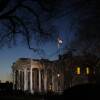Nobody wants to acknowledge it because it is an uncomfortable reminder of the nation’s racial reality. A glaring truth that does not reflect the melting pot "we’re all in this together" American narrative. But two weeks ago, the Parkland, Fla., school shooting put the mirror in front of us. The tragic loss of 17 lives at Marjory Stoneman Douglas High School revived the gun control controversy, and with it, underscored the ongoing discourse about whose lives matter.
This observation not from members of the Black Lives Matter movement, but from the NRA’s Dana Loesch, a fierce and rabid defender of the positions of the gun rights group. Loesch spoke at the conservative CPAC conference just days after the shell-shocked students began burying their friends and advocating for changes to gun laws in the Florida Legislature and Washington, D.C. Loesch aimed her barbed comments at the media saying, “Crying white mothers are ratings gold to you.” And to make sure that everybody got her point, she added, "Notice I said crying white mothers, because there are thousands of grieving black mothers in Chicago every weekend, and you don’t see town halls for them, do you?”
Put aside Loesh’s cynical rabble rousing. The fact is, those white mothers of the kids in Florida inspire the communal emotional connection that the mothers of black kids and others simply don’t. It’s what Harvard anthropology researcher Jason Silverstein called the black empathy gap. Five years ago, he wrote about a study which involved participants looking at videos of black and white people who were administered painful stimuli. The white — and even some of the black — people reviewing the pictures assumed the black study subjects didn’t feel as much pain as the whites. Not hard to understand, then, why there is more attention, more sympathy, more response when whites are grieving. Nobody knows that better than Black Lives Matter, whose mission is to affirm the value of non-white lives. Their effort has often been misconstrued to mean that only black lives matter. In fact, it is an affirmative statement that black lives do matter, at a time when other lives always seem to matter more. Princeton’s Eddie Glaude Jr. noted, “It took a certain kind of people to die to get this conversation on the table.”
The irony is that the student population at Stoneman Douglas High School is one of the most diverse in the nation. We mourned and honored 15-year-old Peter Wang, a member of the Junior ROTC. Wang was buried with his Medal of Heroism, awarded by the U.S. Army in recognition of his brave act — holding the door open, taking bullets allowing other students to escape. But, the prominent faces of the Florida student activists are white kids, and the grieving dads pressing President Trump for answers are white dads. And with them out front, the students’ campaign for reform seems to be forcing immediate corporate and community response.
I hope they can realize their long-term goals. I believe they are the “warriors of the light,” so described by media mogul Oprah Winfrey. But sadly, I know that the racial reality is still much as it was when the a cappella group Sweet Honey in the Rock first sang these poignant lyrics 30 years ago:
Until the killing of black men, black mother’s sons...
Is as important as the killing of white men, white mother’s sons…
We who believe in freedom shall not rest.
We who believe in freedom shall not rest until it comes.





